Stop Worrying and Love the Bomb
Nam-Seoul Museum of Art, Seoul, 2021-2022
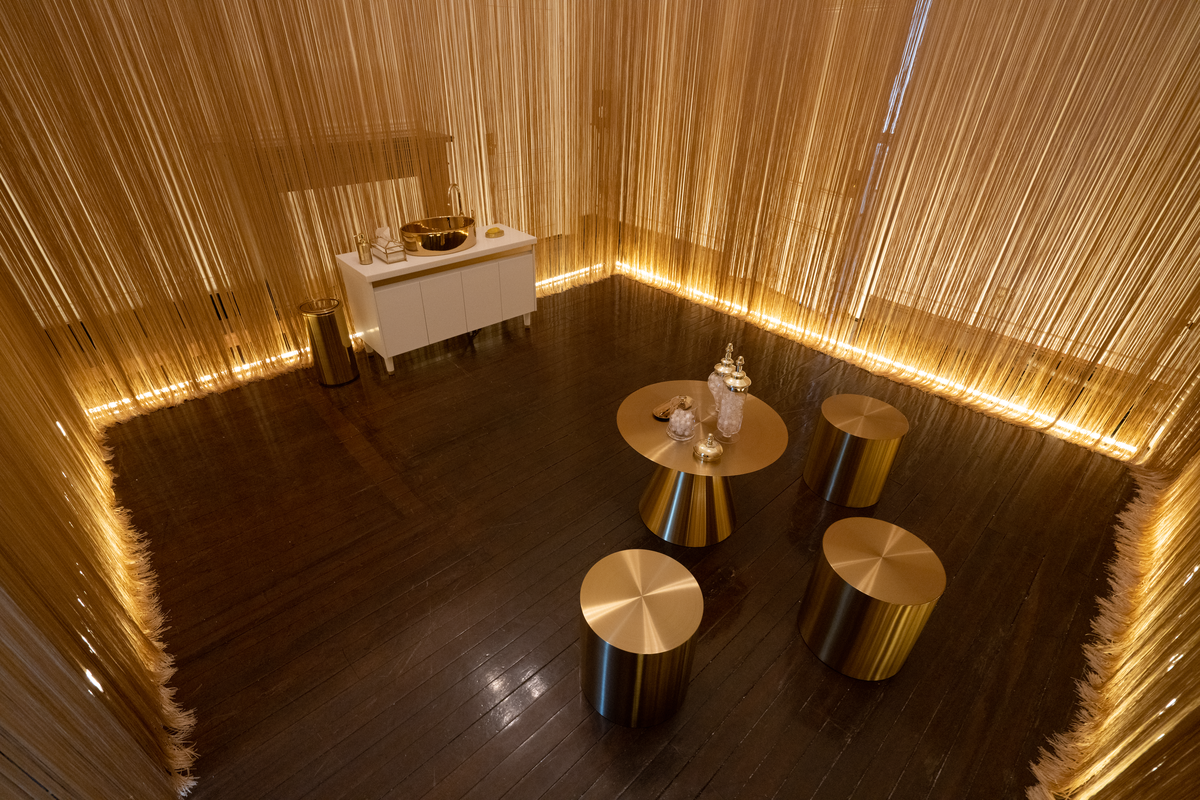
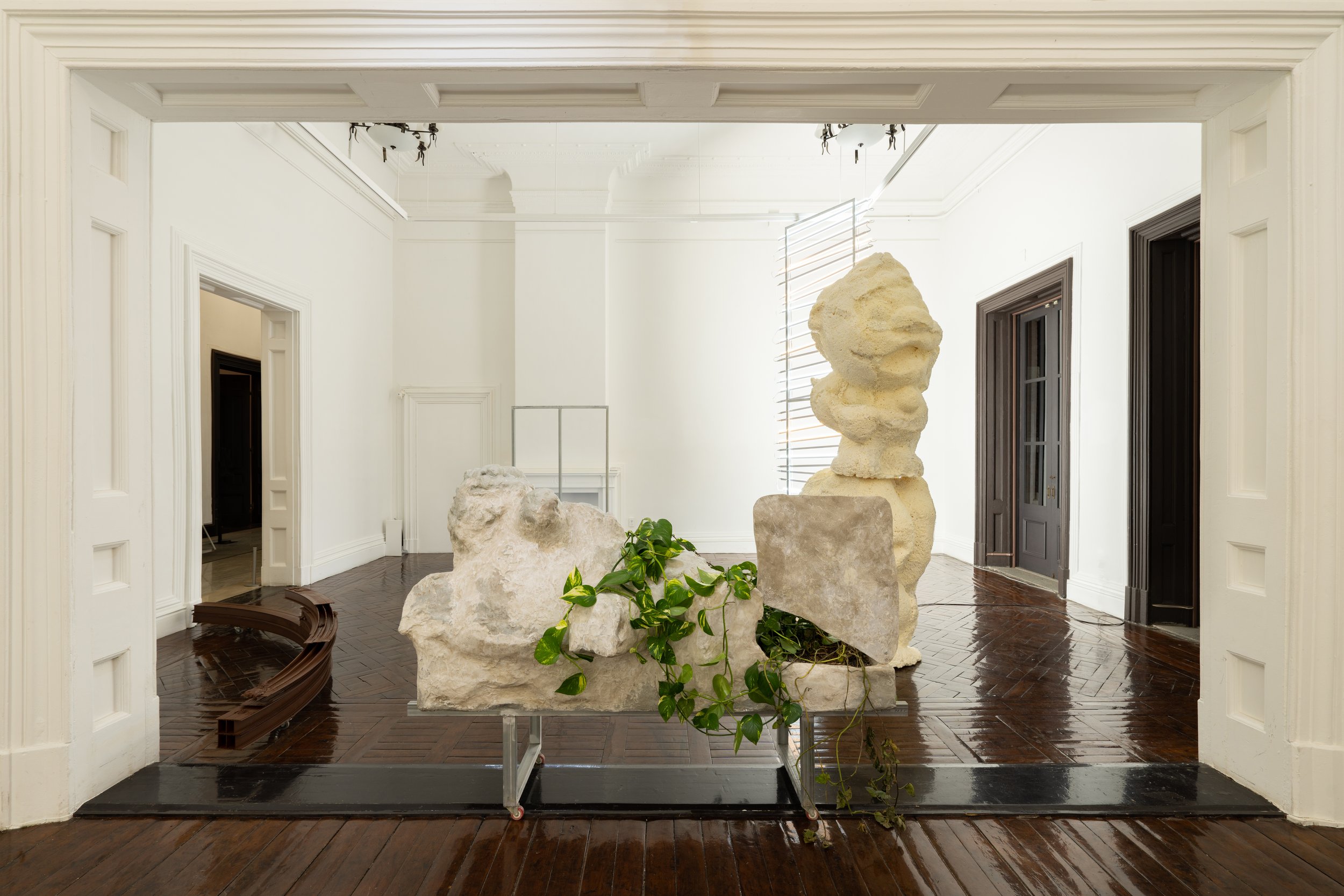
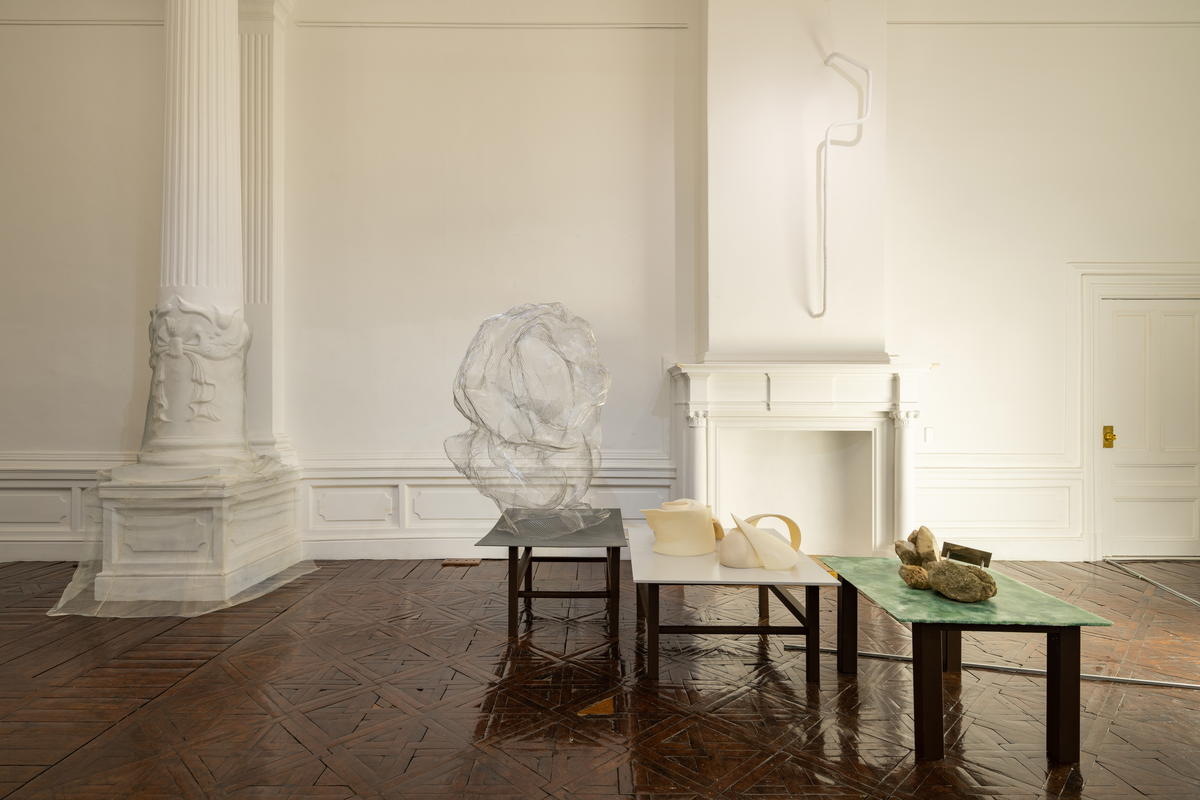
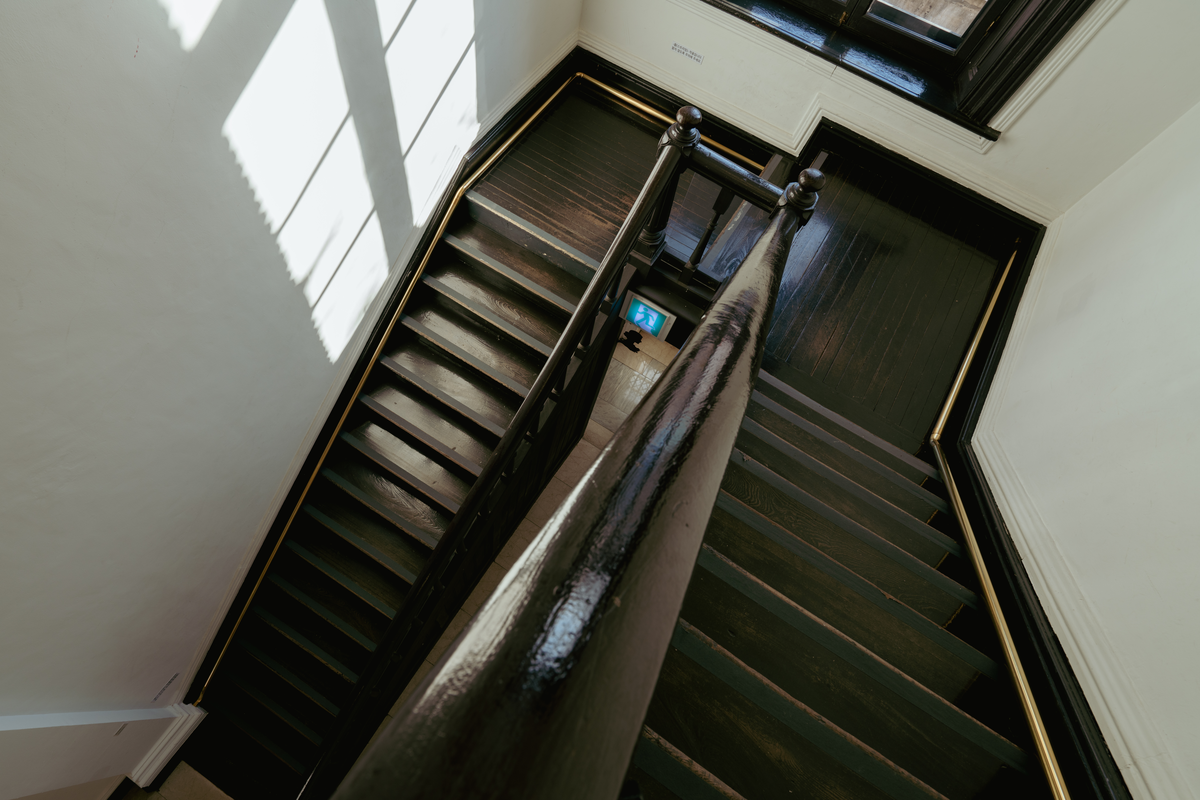
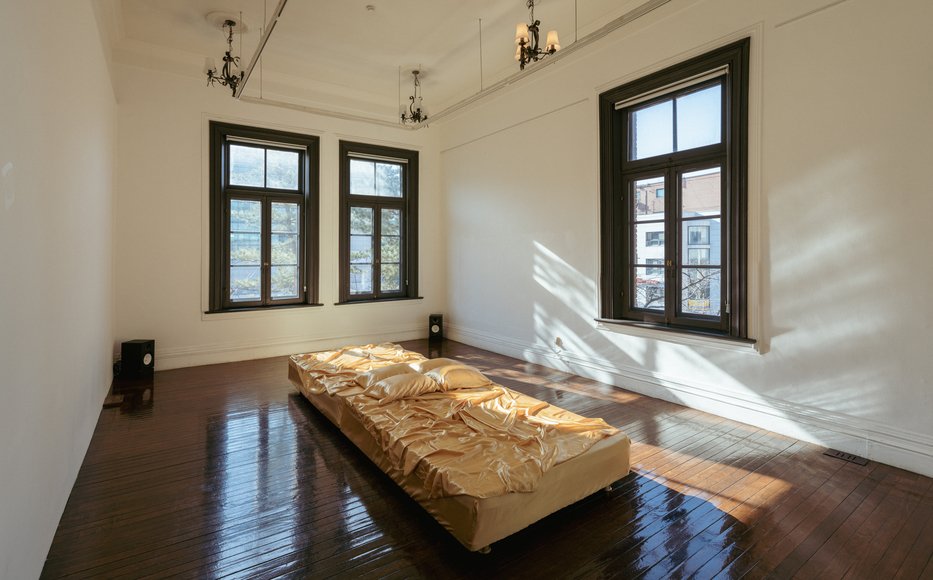
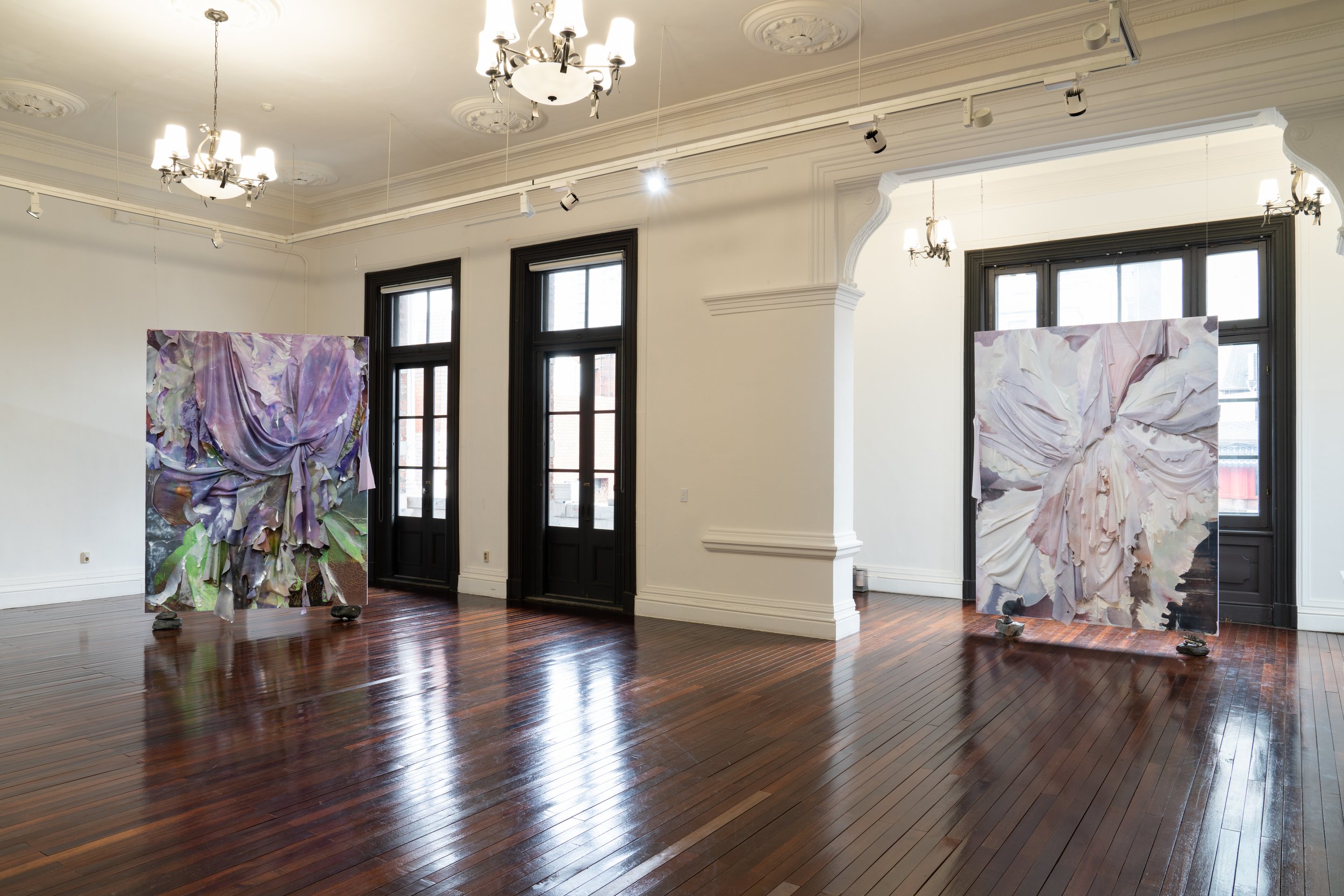
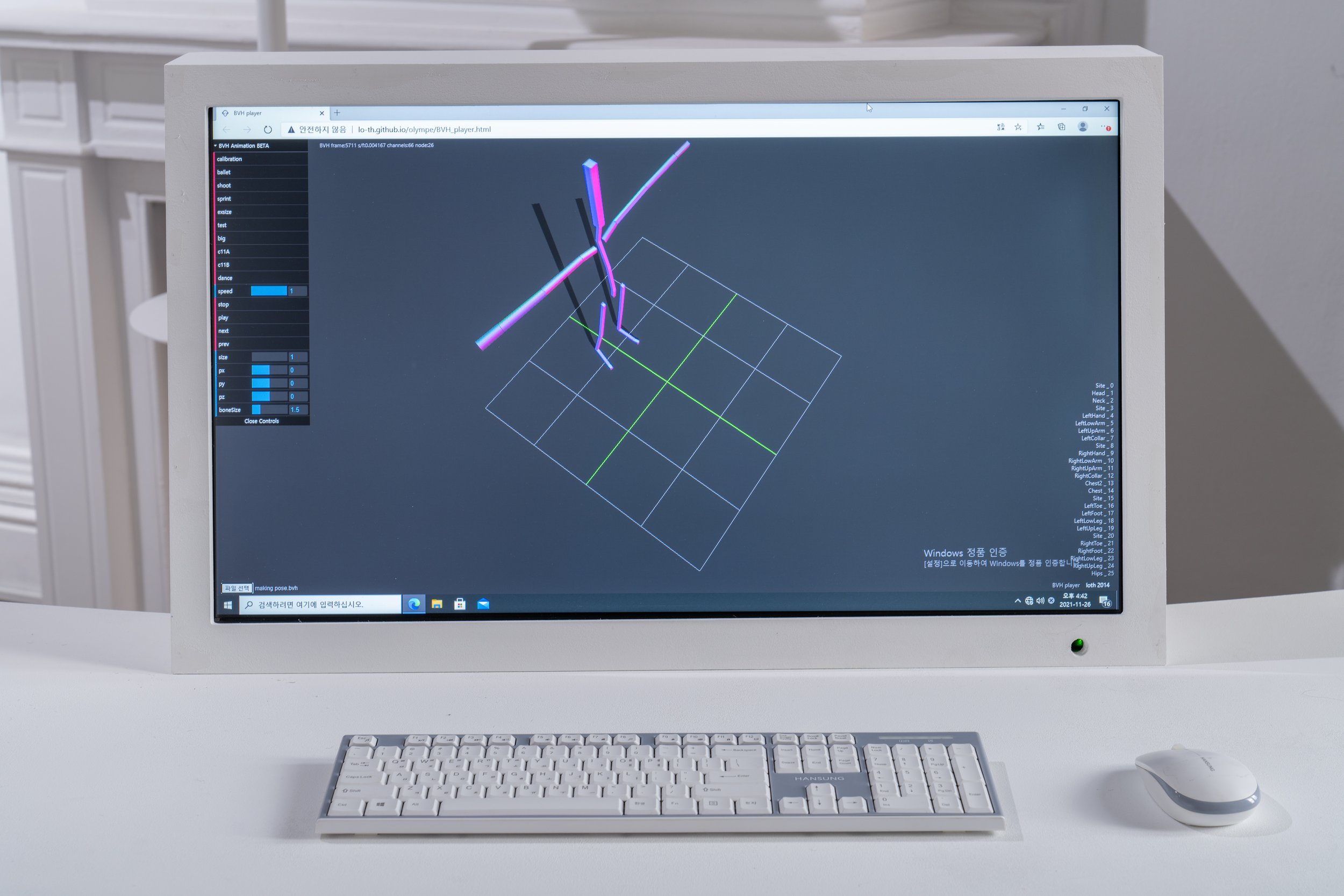
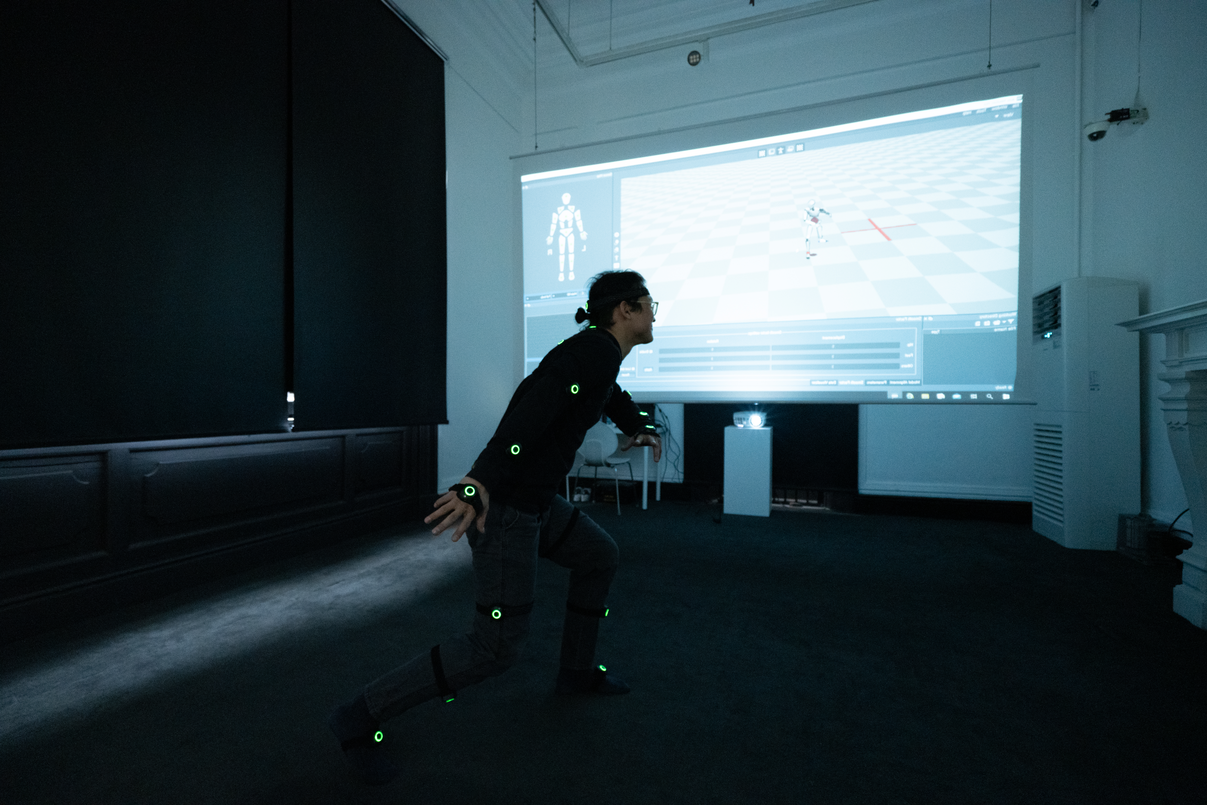
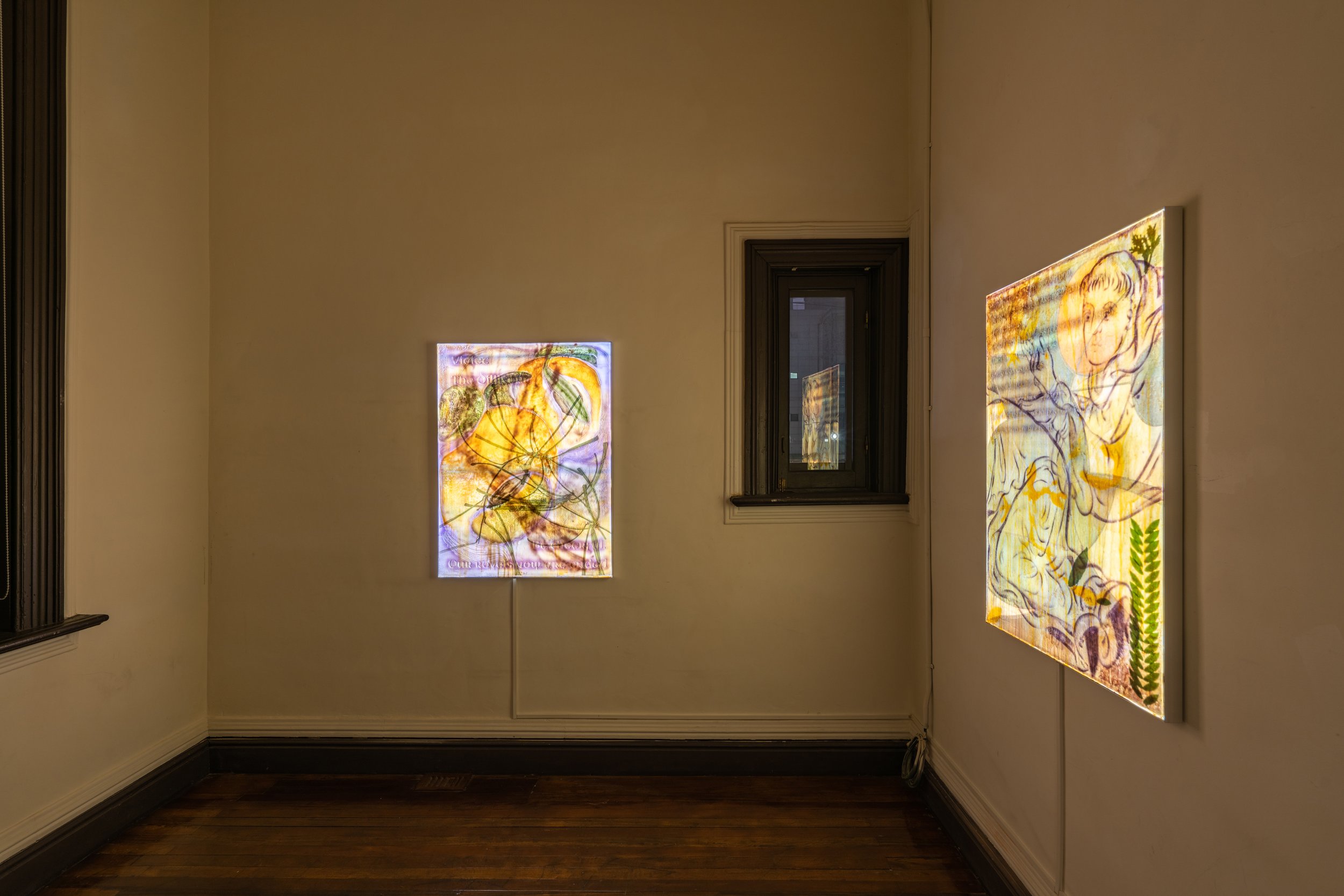
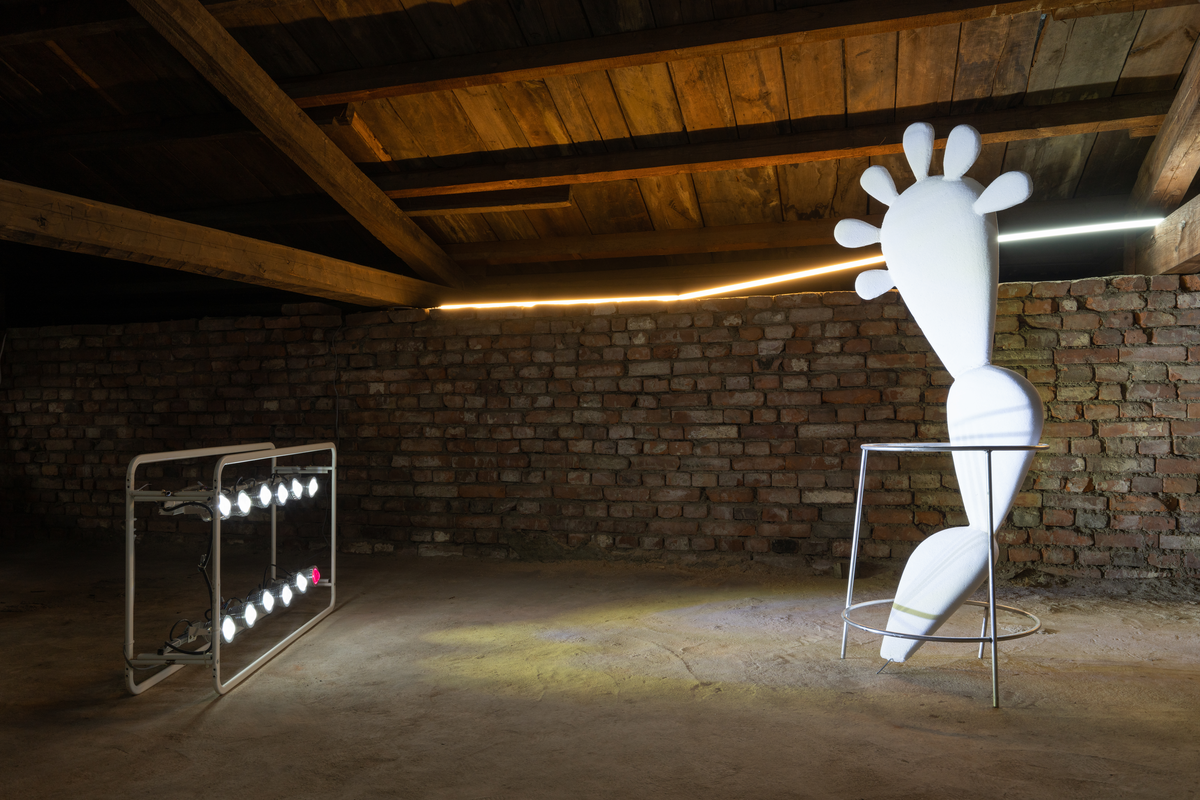
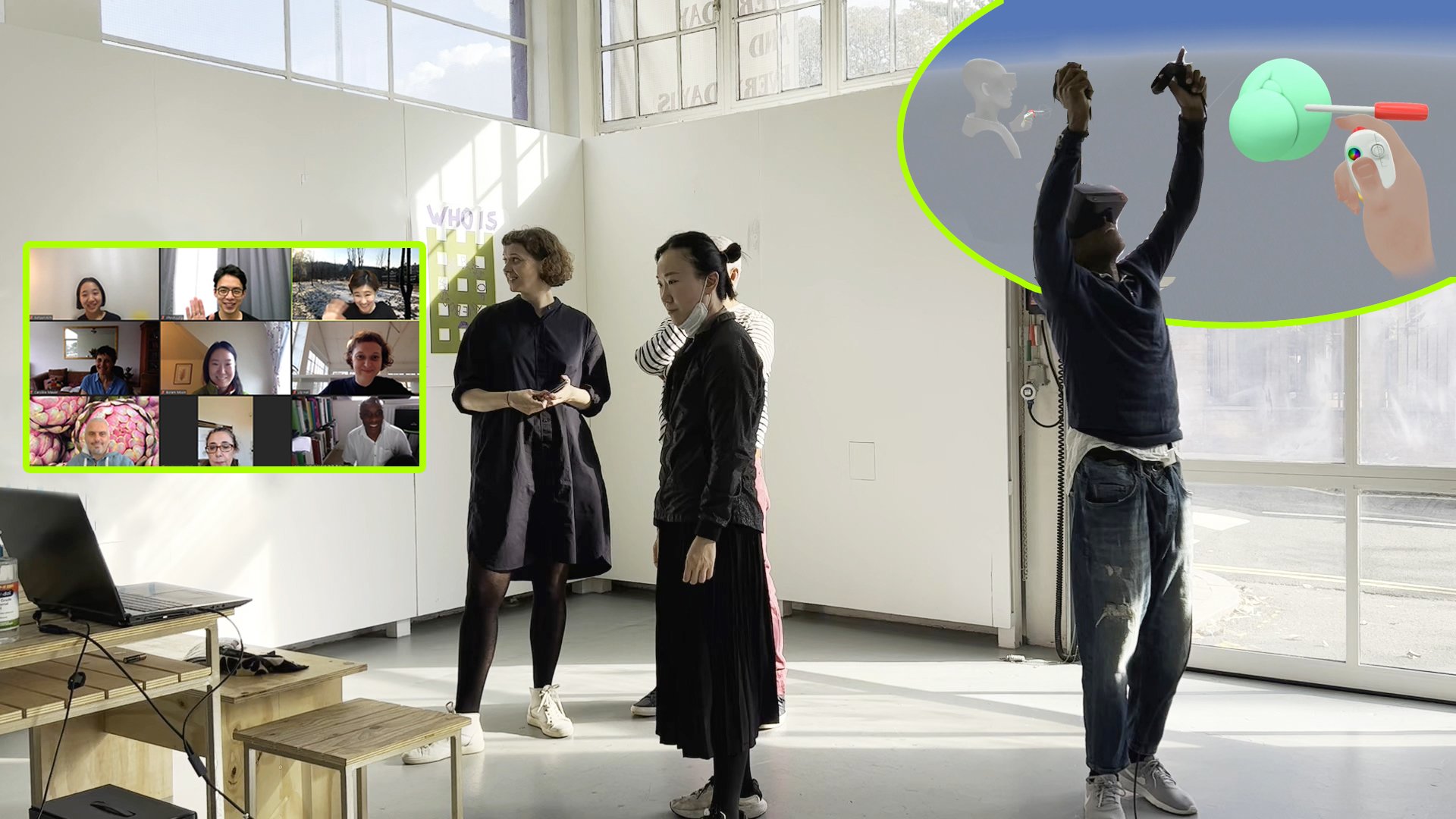
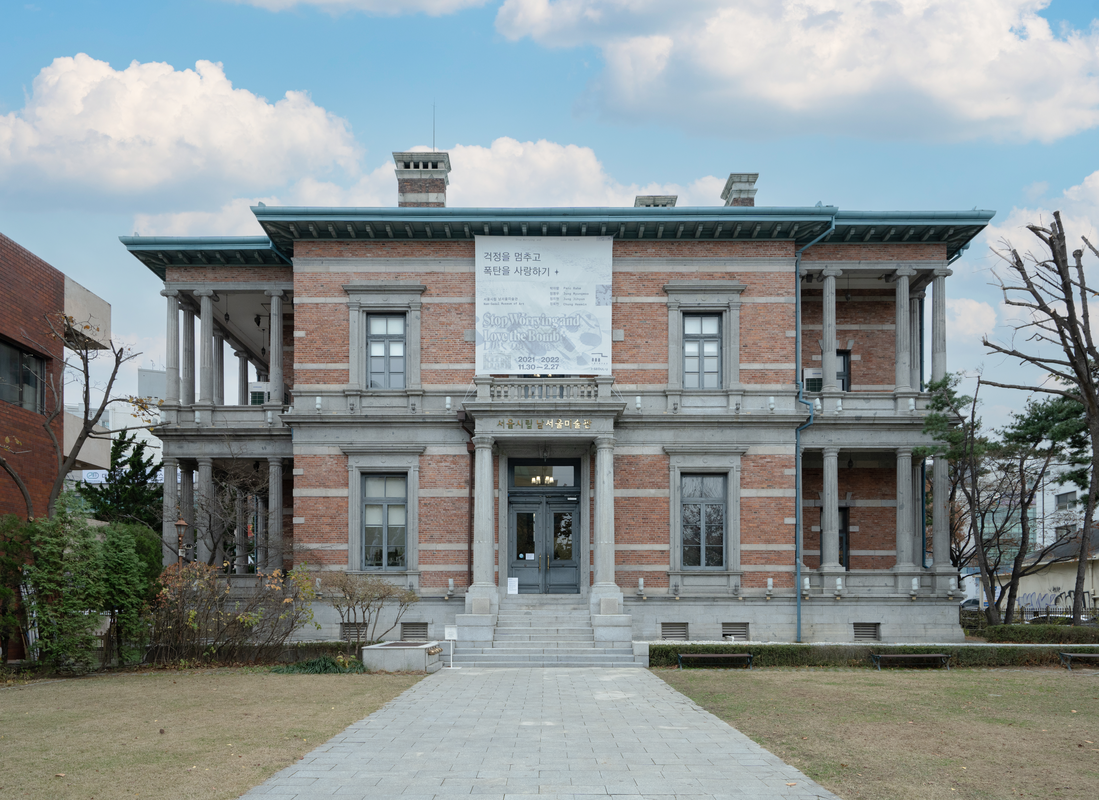
-
Junghyun Kim
Stop Worrying and Love the Bomb at the Nam-Seoul Museum of Art explores the experience of today’s art production involved in the creative handling of materials and technologies.
These days, the smart devices we carry around with us all day have blurred the boundaries between technology and the body in many ways. The messages we frequently exchange with other people and the algorithms created based on our previous search history not only help us save time but offer us convenience. But, they also work in the other way to keep us under the control of such digital technologies. In that virtually everything is searchable and most data of the past can be reloaded when need be, there is no doubt that human beings became still more ‘smarter.’ Nevertheless, it is also true that our right and liberty of choice or a certain initiative concerning such a process have been transferred to the technologies in question, while we remain in the dark about the logic of its design and programming. In addition, the means of communicating with the world using smart devices are reduced to two fingers, the thumb and index finger. The immense diversity of our thoughts and desires is transmitted via the single sense of touch(touching screens). This phenomenon therefore takes us to the era of touch with no trace of sensuality. However, the ways in which we perceive the world can never be unified. For this reason, although with all the possibility of connecting with everyone in everywhere and seeing more things, we sometimes have the feeling of emptiness and boredom in front of the sleek surface of the screen.
Stop Worrying and Love the Bomb takes its cue from the emerging concerns about the side/reverse effects of the remote experiences of art, which is gaining momentum along with the imposition of pandemic regulations. It came as a great relief to the art community that we still can accommodate the audience beyond the virus’s reach even in the era of the pandemic by means of the virtual exhibition formats. At the same time, we also need to realize the limitations of digital media, as they ‘vaporize’ the actuality of sensual experiences in the physical space of the real museum. Then, what can be the new environmental setting required for us in the field of technologies that the digital media, which can no longer be set aside or removed from our lives, has changed? As an attempt to overcome the negative effects of the digital virtual system that nullifies both our sensual experiences and art’s materiality, this exhibition examines the meaning of production through our body and sentiments in a larger context.
In this light, to this exhibition we invite four artists who create art seeking out beneficial relationships with matters and technologies. Before working on the mediums of sculpture, painting, installation and performance, they simulate ideas in the digital setting with software programs like SketchUp, 3D Scanning, etc. And then employing various senses, they materialize the work. The Museum asked them to consider our exhibition hall to be an actual-cum-virtual space, or where the two are overlapped. In it, they were required to view production as a process of having a contact with objects making use of both the sensory system of the body and technologies. As a result, Jung Jihyun studies materials and tries sculpture in the virtual reality. Chung Heemin sets a virtual mode of ‘meditation’ and expresses the extreme sensual experience by means of mediums. Parc Rahm brings up memories imprinted in our body and mind by the uses of smart devices and provides the viewer with an opportunity of imaginative drawing. Jung Myungwoo gathers data from physical movements and creates a performance in relation to them. With the four artists, we would like to find a way for human senses to be effective in today's changing technological environment.
This exhibition takes its title, Stop Worrying and Love the Bomb, from that of art critic Choi Jongchul’s essay. *In the essay, Choi sees Rosalind Krauss’s view on digital media as two-fold, writing that Krauss not merely criticizes ‘the bomb(digital media)-dropping’ and its destructive influence on human senses but also expresses important hopes and expectations for it as a rescuer. Based on Krauss’s critical judgment and faith in digital media, this exhibition neither affirms nor denies the digital environment, but perceives it as a new setting for art. The exhibition intends to talk about art production in the digital world as a method of restoring human senses. We believe that if we can get hold of the physical knowledge of feeling, touching and transforming the materials and technologies constituting the world, always in dialog with its changing environment, the moment of adventure based on belief in the real rather than fear will come to lead us.
Throughout history, a new technology has always appeared. At each moment, human beings have taken a certain distance from the unfamiliar novelty, either by raising our guard against it or looking up to it. At the end of the day, whether a technology would destroy or develop our life has always been dependent on both of our hands. So I would say, it is time to stop worrying and love the bomb.
*Choi Jongchul, “Stop Worrying and Love the Bomb: Media Art after Digital Seen through the Theory of Post Medium,” The Journal of Aesthetics and Science of Art, vol. 53 (2018, 02); In fact, it was in Stanley Kubrick’s film Dr. Strange Love or: How I Learned to Stop Worrying and Love the Bomb (1964) that the phrase in question first appeared. The film shows the tragic outcome of atomic bomb dropping. Art Critic Rosalind Krauss borrows this title in a chapter of her book Under Blue Cup (2011). Choi, in order to mediate Krauss’s post-medium theory and those of other digital theorists, uses the title with a twist for his thesis.
-
김정현
서울시립 남서울미술관의 «걱정을 멈추고 폭탄을 사랑하기»는 오늘날 물질과 기술을 다루는 제작경험에 관한 전시이다. 우리가 늘 몸에 지니고 다니는 스마트 기기는 여러 방식으로 우리의 신체와 디지털의 경계를 무너뜨려 왔다. 타인과 수시로 주고받는 메시지와 검색 데이터로 생성된 알고리즘은 우리가 생각하고 결정하는 데에 들이는 시간을 단축시켜온 반면, 우리를 디지털과 알고리즘 기술에 의지하는 기술예속의 상태에 방치한다. 무엇이든 검색 가능하고 언제든 과거의 데이터들을 불러올 수 있다는 점에서 인류는 한층 ‘스마트’해졌으나, 기술이 지닌 고유의 설계를 파악하지 못한 채 쉽사리 선택에 대한 주도권을 넘겨버린다. 뿐만 아니라, 점점 더 작고 가벼운 스마트 기기를 이용해 세상과 상호작용하는 방식은 점차 검지와 엄지, 두개의 손가락으로 줄어들었다. 각기 다른 욕망과 생각이 스크린을 터치하는 한 가지 감각으로 도출되는 현상은 우리를 어떠한 관능성도 남아있지 않은 터치의 시대로 이끈다. 그러나 우리가 세계를 인식하는 방식은 결코 일원화될 수 없기에, 우리는 모두와 연결될 수 있고 더 많은 것을 볼 수 있게 되었음에도 매끈한 스크린의 표면 앞에서 때때로 공허하고 권태롭다.
«걱정을 멈추고 폭탄을 사랑하기»는 팬데믹 시대에 가속화된 미술의 온라인화에 따른 부작용에 대한 고민에서 출발하였다. 바이러스가 미처 닿지 못하는 가상세계 안에서 미술관과 관객이 만날 수 있다는 것은 모두에게 큰 위안이 되었으나, 한편으로는 디지털 미디어가 미술관에서의 감각적 경험의 실재성을 기화시킨다는 한계를 마주하기도 했다. 이제는 일상과 분리할 수 없는 디지털 미디어가 변화시킨 기술적 지평 안에서 우리가 갖춰야할 새로운 환경설정은 무엇일까. 이번 전시는 디지털의 가상적 시스템이 인간의 감각과 미술의 물질성을 계속해서 무효화하는 현상을 극복하기 위해, 몸과 정서를 통한 제작의 의미를 보다 넓은 범주 안에서 살펴보고자 한다.
이에 이번 전시에서는 물질과 기술과의 호혜적인 관계를 모색하며 작품을 제작하는 네 명의 참여작가를 초대하였다. 이들은 조각, 회화, 설치, 퍼포먼스와 같은 매체를 다룸에 있어 제작에 들어가기 전에 스케치업, 3D 스캐닝 등 디지털을 배경으로 시뮬레이션을 한 후, 여러 감각을 사용해 작품을 현실에 구현해낸다. 미술관은 이들에게 전시장을 하나의 가상과 실재가 중첩된 환경으로 설정하고 그 안에서 신체 감각과 기술을 사용해 사물과의 접촉적 과정으로서의 제작을 다루어줄 것을 요청하였다. 재료를 탐구하고 가상 현실에서의 조각을 시도하는 정지현, ‘명상’이라는 가상적 모드를 설정해 극대화된 감각을 미디엄으로 표현하는 정희민, 스마트 기기로 인해 몸과 마음에 각인된 기억을 불러일으키며 관객에게 상상적 드로잉의 경험을 제공하는 박아람, 모션캡처를 활용해 신체 움직임을 데이터화하고 데이터와 호환하는 방식의 퍼포먼스를 선보이는 정명우의 작업을 통해 오늘날 변화하는 기술환경 안에서 인간의 감각이 유효할 수 있는 방법을 모색해보고자 한다.
전시의 제목을 참조한 미술이론가 *최종철의 연구 논문에서는 로잘린드 크라우스(Rosalind Krauss)가 ‘폭탄(디지털 미디어)의 낙하’와 그것이 인간의 감각에 미치는 파괴력을 비판하면서도 동시에 구원으로서의 중요한 기대를 담고 있다고 보았다. 이번 전시는 이러한 디지털 미디어에 대한 크라우스의 비판과 신뢰를 참조하여, 디지털 환경의 양가적인 측면을 인식하고 그러한 환경 안에서 감각을 복원시킬 수 있는 방안으로 신체감각을 통한 사유로서의 제작경험을 제안한다. 변화하는 디지털 환경과의 상호작용 속에서 이 세계를 구성하고 있는 것들을 온전히 만지고 느끼고 변형시킬 수 있는 감각과 기술에 대한 몸의 지식을 터득한다면, 우리의 미래에 두려움보다는 실재적 믿음에 기반한 모험의 순간이 도래할 것이다.
역사 속에서 새로운 기술은 계속해서 등장해왔고, 그때마다 인간은 낯설고 신기한 그것들을 경계하거나 동경하는 방식으로 거리감을 만들어왔다. 결국 그것이 우리의 삶을 파괴할 것인지 발전시킬 것인지는 기술이 아닌 우리의 두 손에 달려있다. 자 이제 걱정을 멈추고 폭탄을 사랑할 시간이다.
* 최종철,「 “걱정을 멈추고 폭탄을 사랑하기”: 포스트미디엄 이론을 통해 본 디지털 이후의 미디어 아트」, 『미학예술학연구』 53권, (2018. 02.) ; ‘걱정을 멈추고 폭탄을 사랑하기’의 표현은 핵무기의 비극적 결말을 담은 스탠리 큐브릭의 영화 <닥터 스트레인지 러브 혹은: 우리는 어떻게 걱정을 멈추고 폭탄을 사랑하는 법을 배웠나>(1964)에서 최초로 등장했으며, 이를 로잘린드 크라우스가 『Under Blue Cup』 (2011)의 소단락 제목으로 차용하였다. 최종철은 크라우스의 포스트 미디엄 이론과 디지털 이론가들의 포스트 미디어 이론을 중재하기 위해 원래 용법을 살짝 비틀어 논문 제목으로 사용하였다.
-
Participating Artists
Rahm Parc
Myungwoo Jung
Jihyun Jung
Heemin Chung
Overall Supervisor
Heejin Kim, Director of Curatorial Bureau
Exhibition
Junghyun Kim, Curator
Sunyoung Park, Coordinator
Education & PR Supervisor
Mankwon Bong, Head of Education and PR Division
Education
Junghyun Kim, Curator
Sunyoung Park, Coordinator
PR Manager
Sungmin Lee, Yeonmi Lee, Eunju Lee,
Jieun Kwon, Eunjin Lee
PR Agency
o-un
Graphic Design
Kontaakt
Translation
Jeongyeon Lee
Exhibition Design
Donghee Kim
Exhibition Construction and Equipment
Gom Design
Publicity Material Production
Nami ad
Printing
Top Process
Photography
Ikhyun Gim
Art Transport and Installation
BS art
ⒸSeoul Museum of Art. All copyright reserved.